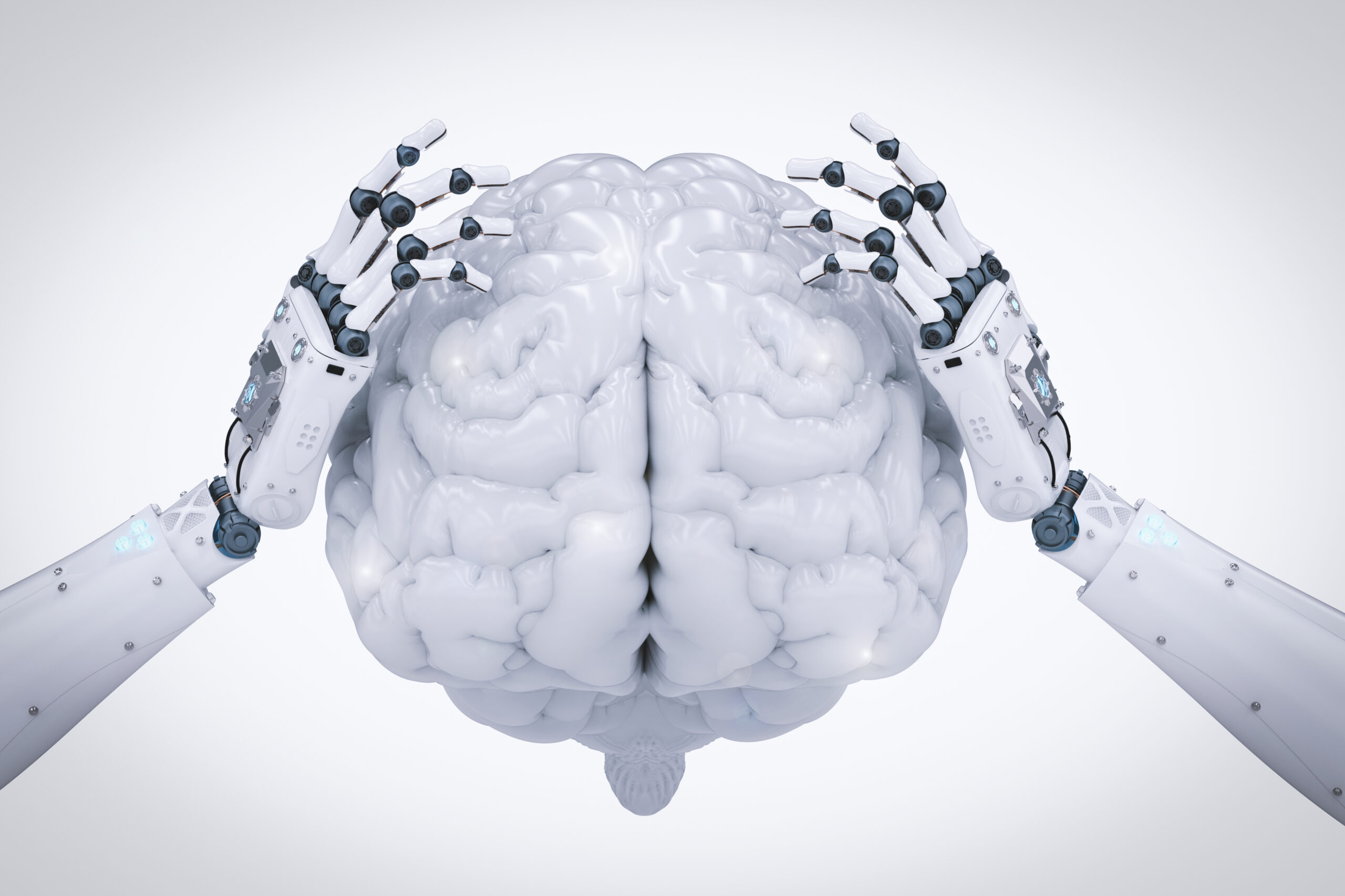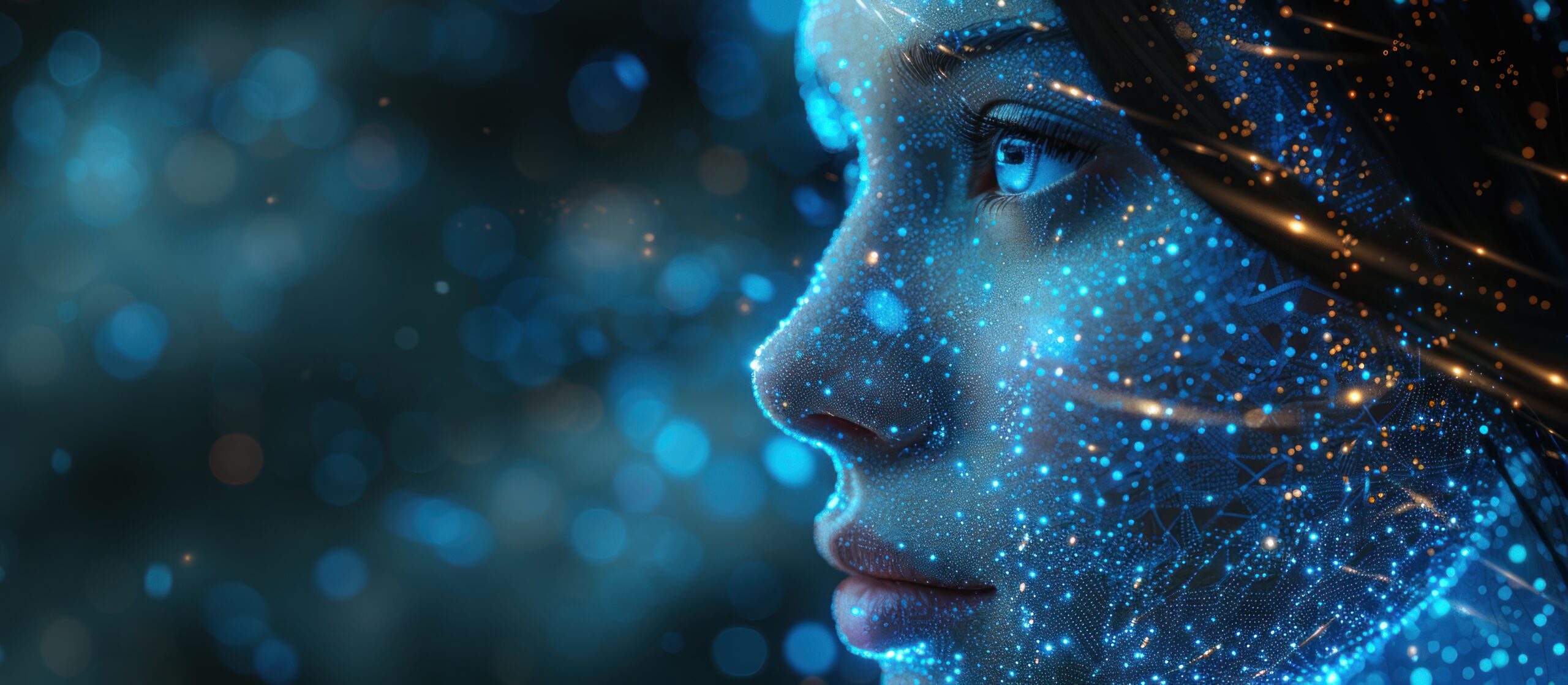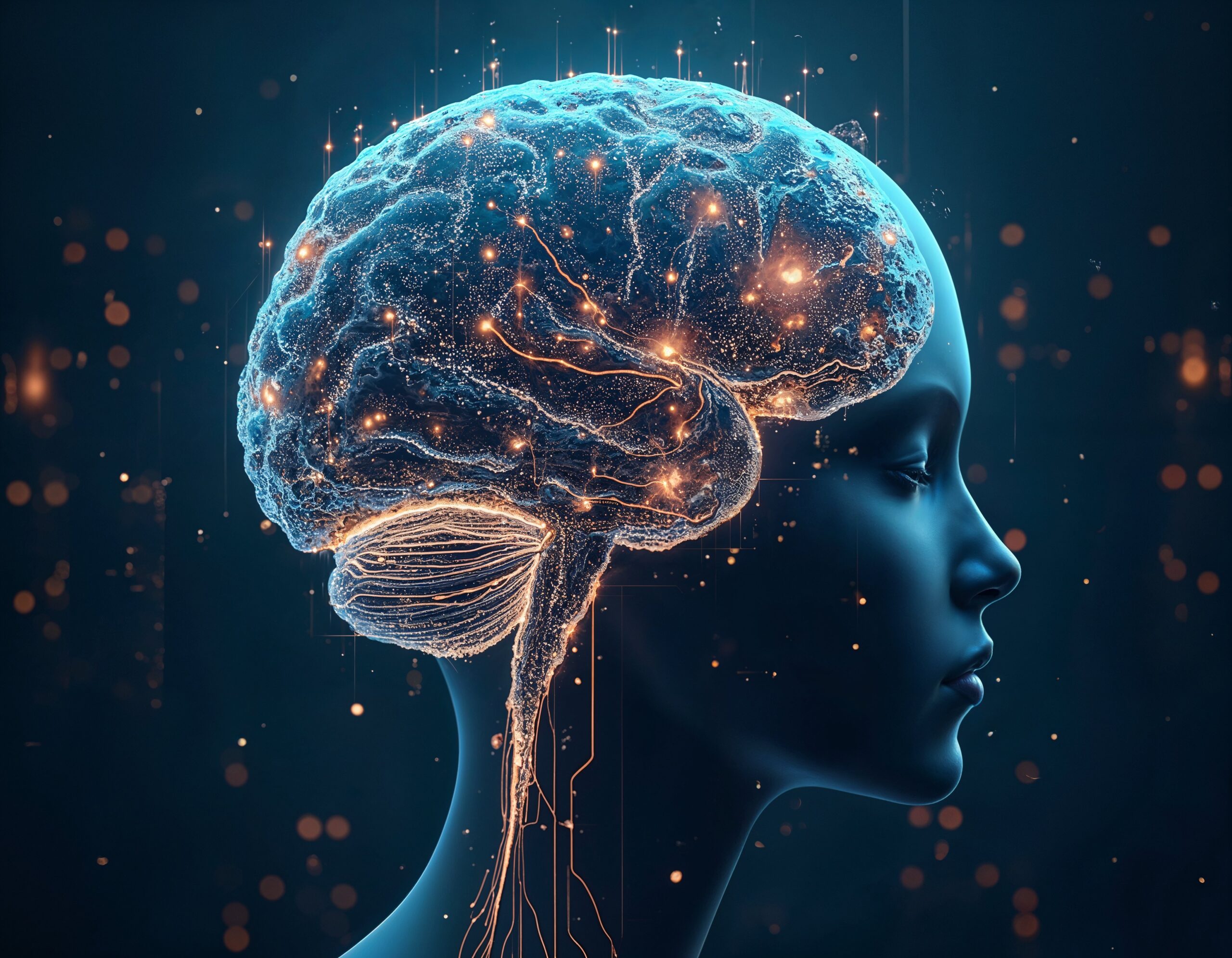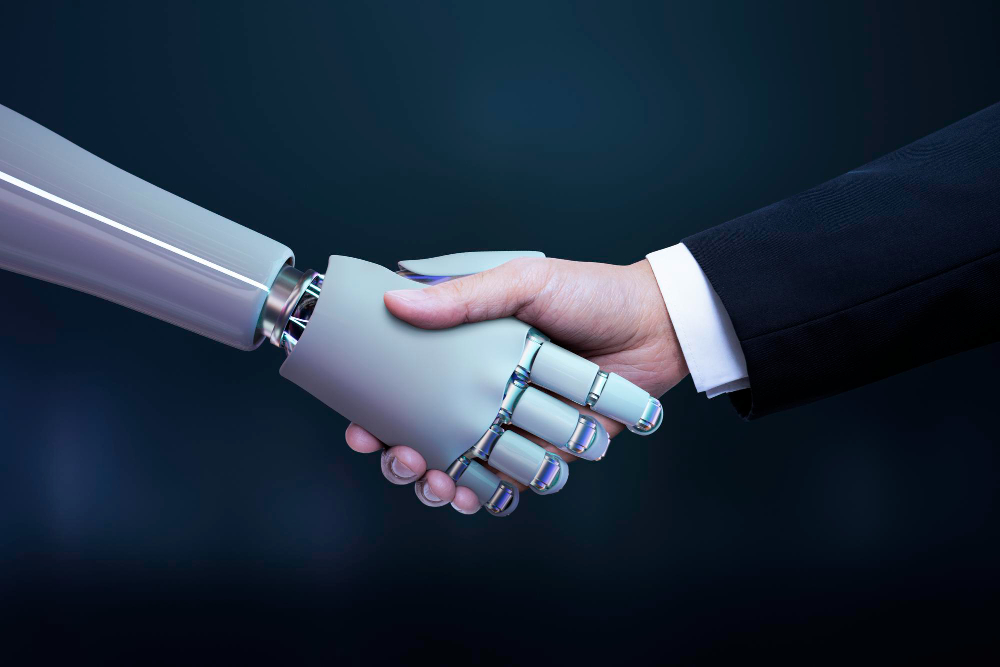LLM (Large Language Model) Explained: What Translators & Businesses Need to Know!
Imagine a machine that can understand and generate human language so well, you might forget it’s not a real person. That’s not science fiction anymore — it’s exactly what LLMs (Large Language Models) do.
You’ve probably already met them. Whether it’s GPT-4 writing your emails, Claude answering complex questions, or LLaMA helping researchers with multilingual texts, LLMs are transforming the way we use and interact with language. But what exactly are they, and why are they creating such a buzz in the world of machine translation and localization? Let’s break it down simply!
A Large Language Model is an AI system trained on massive amounts of text — think billions of words from books, websites, conversations, and more. These models learn patterns in language, so they can do things like answer questions, write essays, translate documents, or even carry out a full-on conversation — all by predicting what word (or sentence) should come next.
LLMs don’t just “translate” word-for-word. They understand context, tone, cultural nuances, and even slang — things traditional tools often struggle with. That’s why LLMs for machine translation and large language models in localization are becoming such game-changers for businesses that need to connect with a global audience.
Of course, behind all of this is a fascinating mix of natural language processing (NLP) and machine learning — fields that teach computers how to make sense of human language, and improve with time and data.
In this blog, we’ll dive into the real-world applications of large language models, what they can (and can’t) do

The Evolution from Rule-Based to Neural Machine Translation
Remember the days when online translations sounded like a robot with a dictionary? Awkward phrases, missing context, and zero nuance — it was more comedy than communication. We’ve come a long way since then.
Today, thanks to breakthroughs like LLMs (Large Language Models), machine translation isn’t just faster — it’s smarter. But to really appreciate how far we’ve come, let’s rewind and trace the journey from those clunky early systems to the sleek, fluent translations powered by today’s AI.
- Step 1: Rule-Based Translation – All About Grammar
In the early days, translation software worked like a set of grammatical if-then rules. You’d feed in a sentence, and the system would try to apply language rules manually, kind of like giving it a textbook and hoping it could pass a conversation test. Unsurprisingly, the results were stiff and often incorrect. Context? Emotion? Forget about it.
- Step 2: Statistical Machine Translation – Word Math
Then came Statistical Machine Translation (SMT) — a big step forward. Instead of relying solely on grammar rules, SMT looked at huge databases of translated text and figured out patterns. It wasn’t perfect, but it was a lot better. Google Translate used this method for years.
Still, SMT struggled with nuance, idioms, and anything that wasn’t literally “by the book.” It lacked true understanding.
- Step 3: Neural Machine Translation – Learning Like Humans
Next up was Neural Machine Translation (NMT) — and this changed the game.
NMT systems are designed to mimic how the human brain processes language. They understand entire sentences rather than word-by-word translations, leading to much smoother, more natural results. This is where machine learning really started to shine in the translation world.
Suddenly, translations became more fluent, less robotic, and better at adapting to different contexts.
- Step 4: Enter LLMs — A Whole New Level
Now we’re in the era of Large Language Models, and the bar has been raised again.
Unlike earlier systems, LLMs for machine translation don’t just translate — they understand. They’re trained on everything from Wikipedia to customer support chats, and they’ve learned how real people actually communicate. That means better context, more accurate tone, and translations that feel human.
And it doesn’t stop there.
The applications of large language models go beyond basic translation. They can localize tone, adapt to regional dialects, and even rewrite content to match cultural expectations, making large language models in localization a true breakthrough for global businesses.

How LLMs (Large Language Models) Are Transforming the Translation Industry?
Let’s be real — the translation industry is no stranger to change. We’ve gone from dictionaries and highlighters to CAT tools and cloud-based platforms. But LLMs (Large Language Models)? They’re shaking things up on a whole new level.
This isn’t just about translating words anymore — it’s about boosting productivity, enhancing accuracy, and even redefining how teams work. Whether you’re a freelance translator, a project manager, or a global brand, chances are you’re already feeling the impact.
So, how exactly are LLMs transforming translation workflows? Let’s break it down
- First-Draft Generation – Fast, Fluent, and Surprisingly Smart
LLMs are excellent at generating quick, high-quality first drafts. Instead of staring at a blank page or doing a word-for-word machine translation that needs tons of rework, linguists can now start with an LLM-generated draft that already “gets” tone, sentence structure, and even idioms.
Example: A marketing agency working with Europe Localize used LLM-assisted drafts to translate 500 product descriptions into 5 languages — cutting initial turnaround time by over 40%.
- Terminology Management – Keeping the Voice Consistent
Brand consistency is a big deal — especially when you’re working across markets. LLMs can be fine-tuned or prompted to follow glossaries, style guides, and brand-specific tone.
They’re not just translating — they’re adapting.
Example: One of our e-commerce clients needed localized product copy in French, German, and Italian. We used an LLM trained on their in-house style to handle terminology, and guess what? Reviewers reported fewer terminology mismatches than usual.
- Post-Editing – Less Fixing, More Finesse
Let’s be honest — even the best LLMs still need a human touch. But the difference is, post-editing is now faster and less painful. Instead of rewriting clunky machine translations, linguists focus on refining tone, fixing subtle errors, and ensuring cultural relevance.
Bonus: Some LLM tools even learn from corrections over time, meaning quality improves with use.
- Quality Assurance – Smarter Checks, Fewer Headaches
LLMs can spot awkward phrasing, grammar issues, even style inconsistencies — and flag them before a human even looks. Combined with existing QA tools, they add an extra layer of polish that saves time (and embarrassment).
Example: For a legal client, Europe Localize used an LLM-assisted QA process that caught subtle terminology shifts across a multilingual contract — something even our CAT tool missed.
- Real Localization — Not Just Translation
Here’s where LLMs really shine: localization. They don’t just translate word-for-word — they understand audience, region, and cultural context. Think:
- Adapting humor for a UK vs. US audience
- Adjusting formality levels in Japanese business content
- Rewriting taglines so they actually make sense in a local market
This level of nuance means brands sound native, not automated.

Multilingual Capabilities: Strengths and Limitations
Ever notice how some machine translations sound almost human, while others leave you scratching your head? That’s not random — it’s a direct result of how LLMs (Large Language Models) handle different languages.
LLMs shine in multilingual scenarios, but they’re not all-knowing polyglots (yet). Their performance depends heavily on the amount of data they’ve been trained on, which leads to some clear strengths and limitations.
- Where LLMs Excel: High-Resource Languages
LLMs handle European language pairs like English–French, Spanish–Portuguese, and German–Dutch exceptionally well. Why? Because these languages are widely spoken, well-documented, and have a ton of parallel translation data.
That makes LLMs for machine translation in Europe incredibly effective, especially for everyday business, marketing, or tech content.
Example: A recent Europe Localize project used an LLM to pre-translate a German product catalog into English, French, and Italian. The result? Over 80% of the content was post-edit ready, saving days of manual work.
- Where They Struggle: Low-Resource & Complex Languages
Now, throw in less-resourced or highly idiomatic languages — like Icelandic, Basque, or regional dialects of Arabic — and things get trickier.
Why? Because the applications of large language models rely on the volume and quality of data. If the training data’s limited, so is the model’s fluency.
Cultural nuances also remain a weak spot. Humor, sarcasm, formality levels, these are deeply human layers of communication that even advanced large language models in localization can miss.
Quality Assessment: When LLMs Excel vs. When Human Expertise Is Essential
So, how good are LLMs really? The answer: It depends on the content.
Let’s break it down by content type, because knowing when to trust the AI and when to call in the humans is key to using LLMs for machine translation wisely.
Where LLMs Do Great?
- Technical documentation: Clear structure, repeated terminology, low ambiguity — LLMs love this stuff.
- E-commerce listings: Fast, accurate first drafts, especially with consistent product formatting.
- FAQs and customer support: LLMs can easily mirror tone and translate conversational language.
Where Humans Are Still Critical?
- Legal texts: One word out of place can change the meaning. LLMs might guess, but legal translators know.
- Medical content: Accuracy and compliance are non-negotiable. LLMs can assist, but not replace, qualified professionals.
- Creative content & marketing: LLMs are great at fluency, but they lack the cultural intuition and originality of a human copywriter.
What About Quality Metrics?
Human reviewers still use industry standards like BLEU, TER, and MQM scores — but when it comes to large language models in localization, we’re also adding new metrics for:
- Fluency
- Tone
- Terminology adherence
- Cultural accuracy
Bottom line? LLMs are powerful tools, but quality comes from collaboration, not automation alone.

The Human-AI Collaboration Model in Modern Translation
Here’s the truth: LLMs aren’t here to replace translators — they’re here to partner with them. And the agencies that embrace this collaboration are pulling way ahead. We’re entering a new era where professional linguists aren’t just post-editing — they’re co-creating with AI.
From Translator to AI Collaborator
Translators today are wearing new hats:
- Prompt engineers, crafting instructions to guide LLMs.
- Post-editing pros, refining AI output for fluency, tone, and accuracy.
- Terminology guardians, ensuring brand voice and subject matter expertise.
Applications of large language models now support everything from bulk translation to QA checks, but it’s the human eye that ensures quality.
Real-World Example: The Hybrid Workflow
At Europe Localize, we recently tackled a global software launch — 8 languages, 2 weeks. Using an LLM for first-draft generation and terminology tagging, our linguists then stepped in to post-edit and localize.
The result?
- 50% faster delivery
- 30% fewer edits compared to traditional MT
- Zero client revisions
That’s the magic of a human-AI workflow done right.
Addressing Client Concerns: Accuracy, Confidentiality, and Reliability
“Can we really trust AI with our content?”
That’s the million-dollar question — and a totally fair one. While LLMs (Large Language Models) offer amazing capabilities, many clients still have questions around data security, quality, and project consistency.
Let’s tackle those head-on
- Confidentiality: Is My Data Safe?
LLMs don’t automatically guarantee privacy. Some models are open and cloud-based, meaning your content could be stored or used for future training.
At Europe Localize, we use secure, enterprise-grade models that comply with GDPR and offer on-premise or private cloud deployment, ensuring full control over sensitive data. Your content stays yours — always.
- Accuracy & Consistency: Will It Sound Like Us?
Absolutely — with the right process.
We train LLMs with your brand voice, terminology, and tone guides. That way, your translations stay consistent across campaigns, regions, and projects.
And yes, there’s still a human in the loop to verify everything.
- Reliability: What If the AI Gets It Wrong?
It might. That’s why LLMs for machine translation are just one piece of the puzzle. Human linguists remain key, not just for fixing errors, but for refining tone, nuance, and meaning. In short, LLMs assist, but humans approve.
Cost-Benefit Analysis: LLMs in Translation Business Models
Let’s talk numbers. Because yes — while the applications of large language models are exciting, businesses want to know: Is it worth it?
Short answer: Absolutely — when used strategically.
Faster Turnarounds = Lower Costs
LLMs dramatically speed up the first draft phase. A document that used to take 3 days? Now it’s ready for post-editing in a few hours.
That means agencies can:
- Deliver more projects in less time
- Free up linguists for higher-value work
- Offer competitive pricing without compromising quality
Reduced Human Hours, Smarter Allocation
Instead of spending hours on repetitive translations, linguists focus on:
- QA
- Style correction
- Local cultural adaptation
This shift lets agencies handle more volume without scaling up headcount.
More Value for Clients
Clients get:
- Faster delivery
- More consistent quality
- Better pricing transparency
At Europe Localize, we’ve seen cost reductions of 20–40% for clients using LLM-enhanced workflows — all while maintaining human oversight. It’s not just about saving money — it’s about delivering more value.
Ethical Considerations and Industry Standards
As with any powerful technology, LLMs come with responsibility. Translation isn’t just about converting words — it’s about respecting culture, voice, and meaning. And AI doesn’t always get that right.
Let’s explore the ethical side of large language models in localization.
Bias in Output
LLMs learn from the internet, which means they can accidentally pick up gender, cultural, or racial biases in the process. That’s a big issue when translating sensitive or public-facing content.
Solution: Human editors + bias detection tools = safer, more inclusive translations.
Cultural Sensitivity
Sometimes a phrase that’s totally fine in one language could be offensive, awkward, or just confusing in another.
That’s why LLM for machine translation always needs a layer of human cultural insight, especially in marketing, media, or legal content.
Intellectual Property
Who owns the AI-generated content? That’s still being debated globally.
We follow emerging industry standards that clarify rights and usage, ensuring our clients retain full control of their translated content.
Moving Toward Responsible AI
The translation industry is rallying around ethical AI guidelines, like:
- Transparent use of LLMs
- Human review guarantees
- Data protection policies
At Europe Localize, we’re proud to be part of that movement — combining innovation with accountability.
Conclusion: The Future of Translation Is Human + AI — Are You Ready?
Large Language Models (LLMs) aren’t just a tech trend — they’re a game-changing force that’s redefining how we approach translation and localization.
From streamlining workflows and accelerating delivery to enhancing consistency and unlocking multilingual potential, the applications of large language models are reshaping the entire industry. But here’s the catch:
LLMs can’t do it alone. Human expertise is still the secret ingredient.
It’s not about choosing between humans or AI — it’s about combining the best of both.
Why Partner with Europe Localize?
At Europe Localize, we’re not just keeping up with the future — we’re building it.
We blend cutting-edge LLM for machine translation tools with seasoned, native-speaking linguists to deliver high-quality, culturally fluent, and cost-effective translation solutions.
What sets us apart?
- AI-enhanced workflows backed by human quality control
- Industry-specific LLM training for better accuracy
- Full data security and compliance (GDPR-ready)
- Personalized support and scalable solutions
Whether you’re translating technical manuals, marketing campaigns, legal documents, or e-commerce content, we make sure your message lands right in every language.
Ready to Take the Next Step?
If you’re looking for a future-proof translation partner who knows how to harness the power of large language models in localization, without losing the human touch, let’s talk.
Reach out to Europe Localize today for a tailored demo or consultation. Together, we’ll help you speak to the world — clearly, confidently, and in every language that matters.




